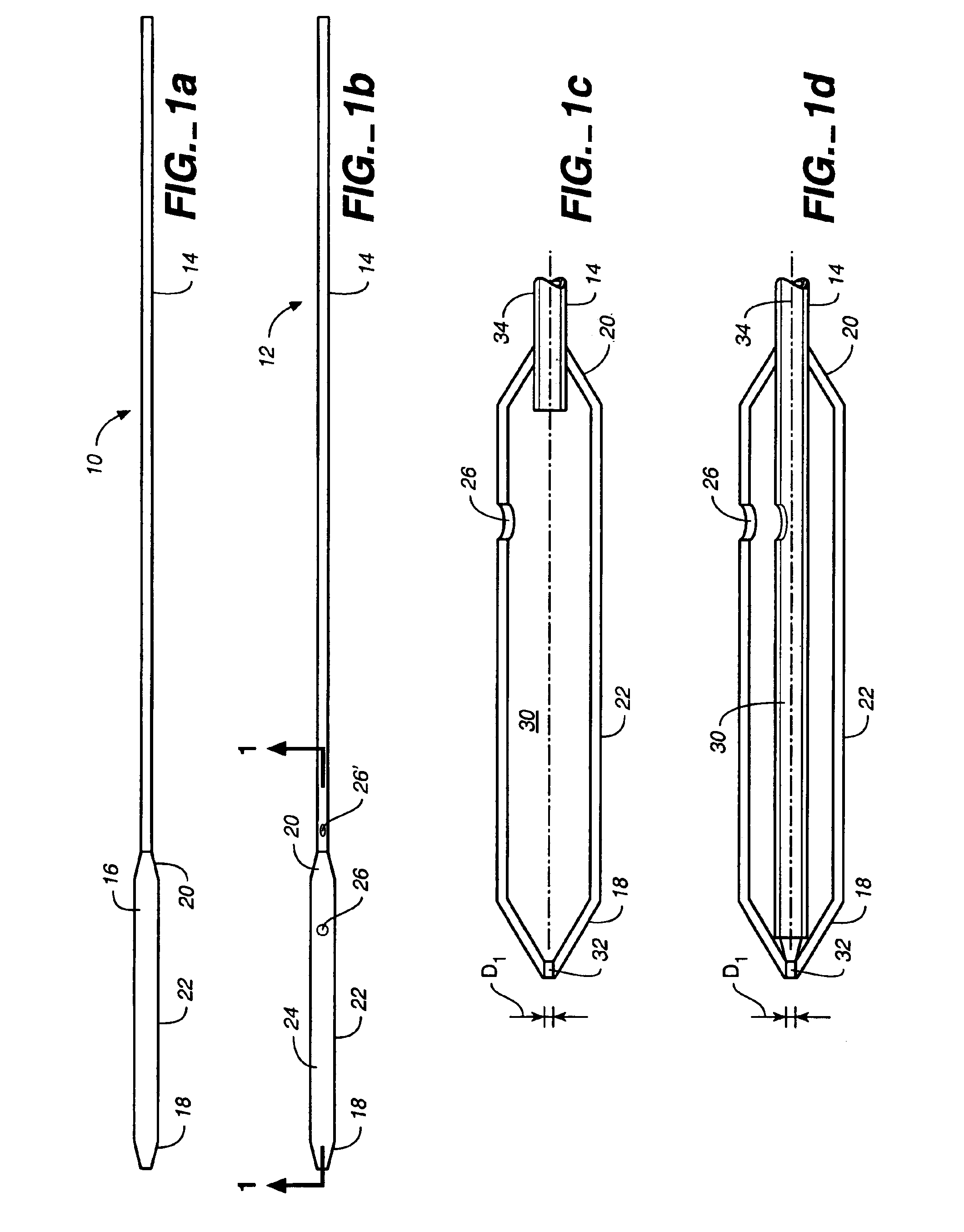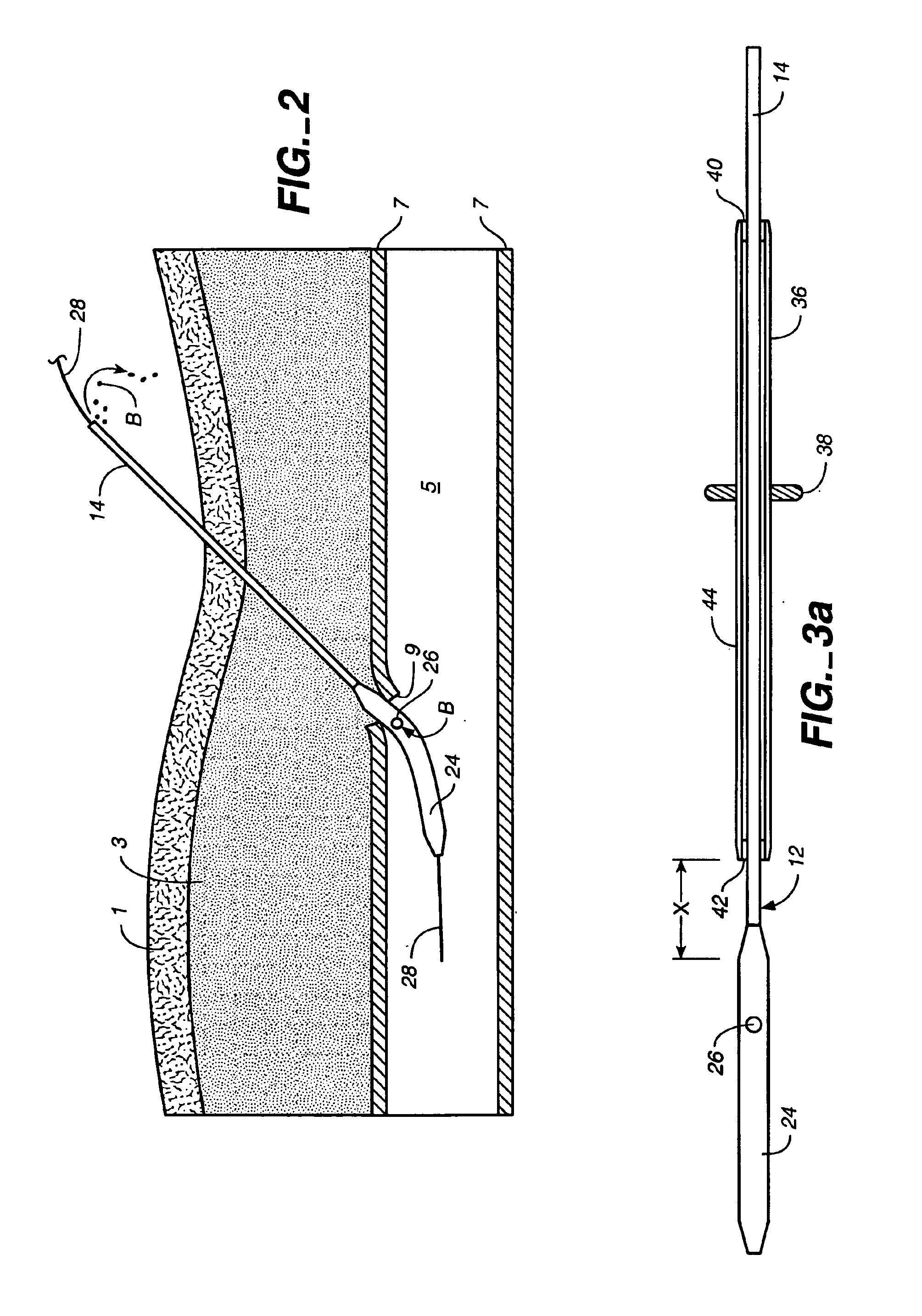Depth and puncture control for blood vessel hemostasis system
a technology of depth and puncture control and blood vessel hemostasis, which is applied in the field of blood vessel puncture site closure systems and methods, can solve the problems of inability to accurately place the absorbable material plug directly over the puncture site, unsuitable for patients with substantial amounts, and high risk of hematoma, and achieve the effect of inhibiting blood loss
- Summary
- Abstract
- Description
- Claims
- Application Information
AI Technical Summary
Benefits of technology
Problems solved by technology
Method used
Image
Examples
Embodiment Construction
[0053]Referring to the drawing figures, like reference numerals designate identical or corresponding elements throughout the several figures.
[0054]In the context of the present invention, “pledget” means a piece of sponge formed into a generally elongated shape having a size which allows delivery in a hydrated state through a delivery cannula or introducer to a site of a puncture in a blood vessel.
[0055]“Sponge” means a biocompatible material which is capable of being hydrated and is resiliently compressible in a hydrated state. Preferably, the sponge is non-immunogenic and may be absorbable or non-absorbable.
[0056]“Absorbable sponge” means sponge which, when implanted within a human or other mammalian body, is absorbed or resorbed by the body.
[0057]“Hydrate” means to partially or fully saturate with a fluid, such as saline, water, contrast agent, thrombin, therapeutic agents, or the like.
[0058]FIG. 1a illustrates a puncture control tip 10 in accordance with a first embodiment of th...
PUM
 Login to View More
Login to View More Abstract
Description
Claims
Application Information
 Login to View More
Login to View More - R&D
- Intellectual Property
- Life Sciences
- Materials
- Tech Scout
- Unparalleled Data Quality
- Higher Quality Content
- 60% Fewer Hallucinations
Browse by: Latest US Patents, China's latest patents, Technical Efficacy Thesaurus, Application Domain, Technology Topic, Popular Technical Reports.
© 2025 PatSnap. All rights reserved.Legal|Privacy policy|Modern Slavery Act Transparency Statement|Sitemap|About US| Contact US: help@patsnap.com



